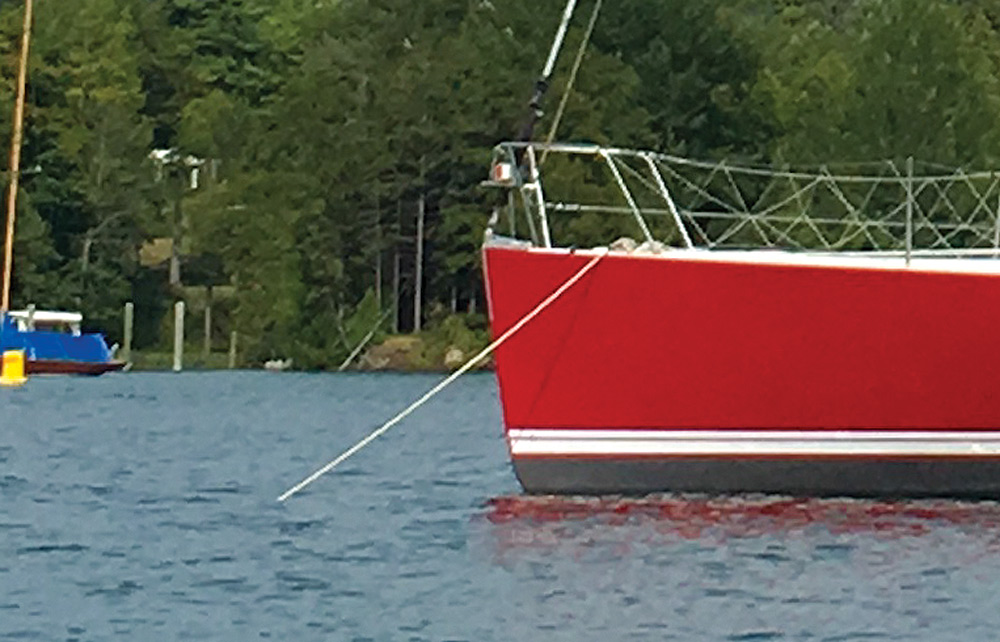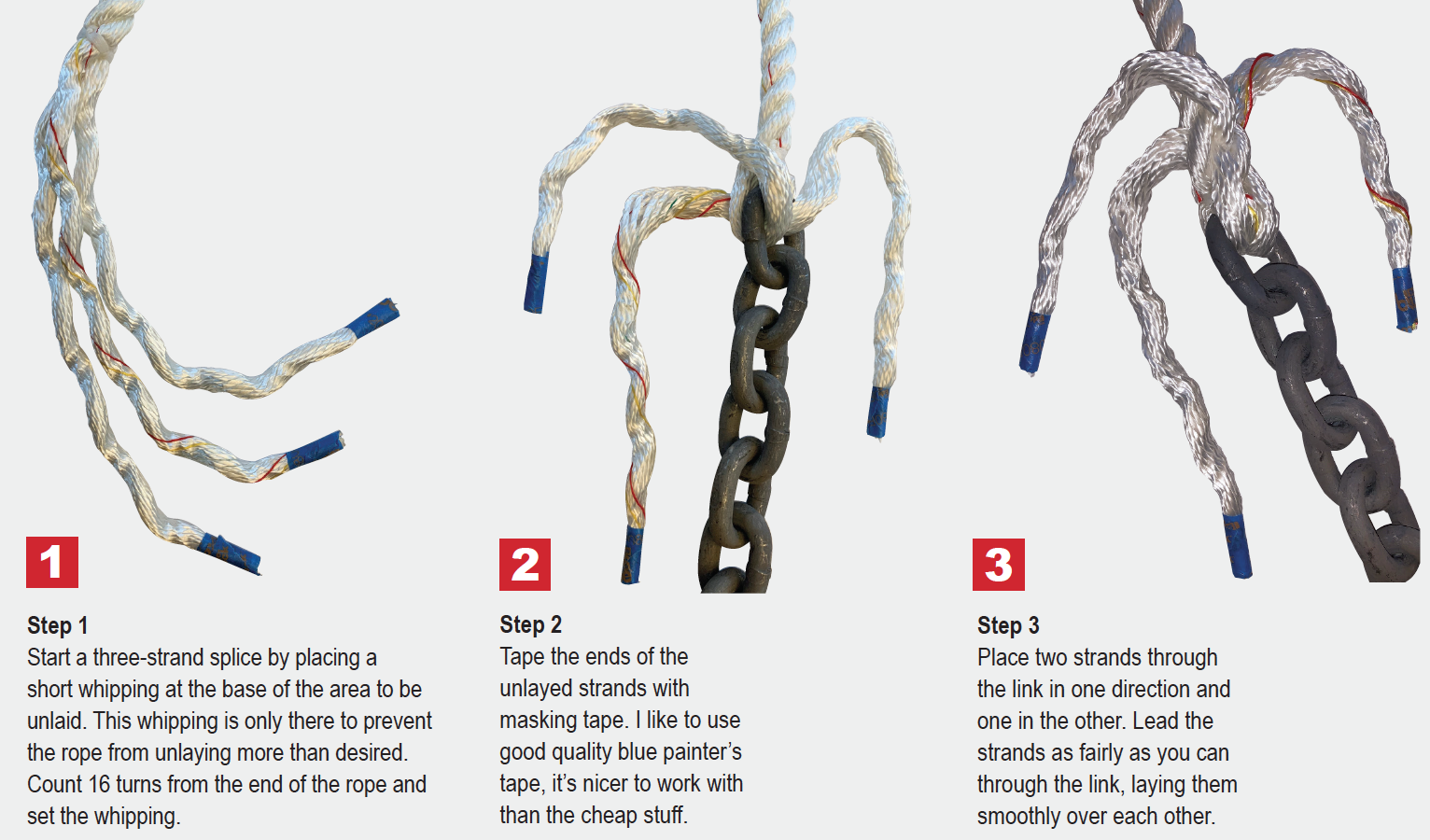Splicing three-strand line to chain
A smooth transition from rope anchor rode to chain is a necessity, and in need of frequent inspection
The best way to attach three-strandline to chain is with a thimble and screw-pin shackle. The shackle provides a large, smooth radius for the rope, as well as providing chafe protection. A shackle can be very secure, especially with a moused pin. The downside is that this interface is bulky, so although you may get it over your anchor roller, it certainly won’t make it through a windlass.

This splice is a compromise. A well tucked three-strand splice is very efficient, retaining more than 90% of the rope’s strength. In this splice, however, three strands of the rope are jammed through a chain link. These strands won’t bear equally on the link, and a little strength is lost. There is also the potential for chafe internally and externally on the splice.
In freshwater, the biggest issue is chafe between the chain and the splice as it goes through the windlass. But in saltwater you have the additional issue of corrosion of the link that is covering the splice.
The splice can chafe on the link, but if the splice is drawn up tight, there is little movement between the rope and chain. The greater chance for chafe is on the outside of the splice. The splice will be pulled through the windlass gypsy, and while the gypsy is designed to be gentle, it can eat away at the splice. It can also cause corrosion of the chain link incorporated into the splice as it is likely to be perpetually damp and possibly exposed to salt water. Because of all of this, it is important to inspect the splice regularly and replace it as needed.


Comments